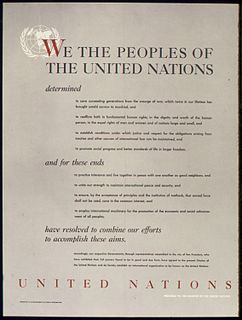Related Research Articles
In parliamentary procedure, a point of order occurs when someone draws attention to a rules violation in a meeting of a deliberative assembly.

A preamble is an introductory and expressionary statement in a document that explains the document's purpose and underlying philosophy. When applied to the opening paragraphs of a statute, it may recite historical facts pertinent to the subject of the statute. It is distinct from the long title or enacting formula of a law.
An amendment is a formal or official change made to a law, contract, constitution, or other legal document. It is based on the verb to amend, which means to change for better. Amendments can add, remove, or update parts of these agreements. They are often used when it is better to change the document than to write a new one. Only the legislative branch is involved in the amendment process.
In parliamentary procedure, an adjournment ends a meeting. It could be done using a motion to adjourn.

Minutes, also known as minutes of meeting, protocols or, informally, notes, are the instant written record of a meeting or hearing. They typically describe the events of the meeting and may include a list of attendees, a statement of the issues considered by the participants, and related responses or decisions for the issues.
A repeal is the removal or reversal of a law. There are two basic types of repeal, a repeal with a re-enactment of the repealed law, or a repeal without any replacement.
In parliamentary procedure, unanimous consent, also known as general consent, or in the case of the parliaments under the Westminster system, leave of the house, is a situation in which no member present objects to a proposal.
In parliamentary procedure, an objection to the consideration of a question is a motion that is adopted to prevent an original main motion from coming before the assembly. This motion is different from an objection to a unanimous consent request.
In parliamentary procedure, the motion to amend is used to modify another motion. An amendment could itself be amended. A related procedure is filling blanks in a motion.
In parliamentary procedure, a motion to appeal from the decision of the chair is used to challenge a ruling of the chair.
In parliamentary procedure, a motion is a formal proposal by a member of a deliberative assembly that the assembly take certain action. Such motions, and the form they take, are specified by the deliberate assembly and/or a pre-agreed volume detailing parliamentary procedure, such as Robert's Rules of Order, Newly Revised; The Standard Code of Parliamentary Procedure; or Lord Critine's The ABC of Chairmanship. Motions are used in conducting business in almost all legislative bodies worldwide, and are used in meetings of many church vestries, corporate boards, and fraternal organizations.
In parliamentary procedure, a suspension of the rules allows a deliberative assembly to set aside its normal rules to do something that it could not do otherwise. However, there are rules that cannot be suspended.
In parliamentary procedure, a motion to postpone to a certain time is used to delay action on a pending question until a different day, meeting, hour or until after a certain event. Then, when that time comes, the consideration of the question is picked up where it was left off when it was postponed.
Debate in parliamentary procedure refers to discussion on the merits of a pending question; that is, whether it should or should not be agreed to. It is also commonly referred to as "discussion".
In disciplinary procedures, the motion to declare the chair vacant is used as a remedy to misconduct or dereliction of duty by the chairperson of a deliberative assembly, when the rules allow it. It is usually combined with a motion to elect a new chair.
In parliamentary procedure, requests and inquiries are motions used by members of a deliberative assembly to obtain information or to do or have something done that requires permission of the assembly. Except for a request to be excused from a duty, these requests and inquiries are not debatable nor amendable.
In parliamentary procedure, using Robert's Rules of Order Newly Revised (RONR), the motion to consider by paragraph is used to consider separately the different parts of a report or long motion consisting of a series of resolutions, paragraphs, articles, or sections that are not totally separate questions.
Parliamentary procedure is the body of rules, ethics, and customs governing meetings and other operations of clubs, organizations, legislative bodies, and other deliberative assemblies. General principles of parliamentary procedure include rule of the majority with respect for the minority.
In parliamentary procedure, a substitute amendment is an amendment that replaces a portion or all of the wording in a proposal.
References
- ↑ Robert, Henry M.; et al. (2011). Robert's Rules of Order Newly Revised (11th ed.). Philadelphia, PA: Da Capo Press. p. 135. ISBN 978-0-306-82020-5.
- ↑ Robert III, Henry M.; et al. (2011). Robert's Rules of Order Newly Revised In Brief (2nd ed.). Philadelphia, PA: Da Capo Press. p. 50. ISBN 978-0-306-82019-9.